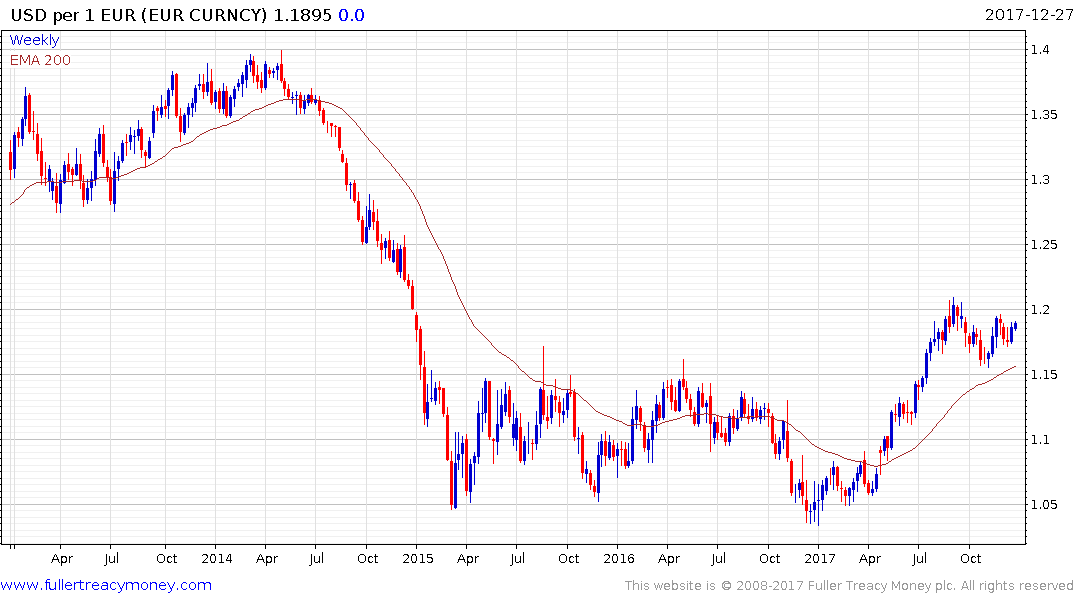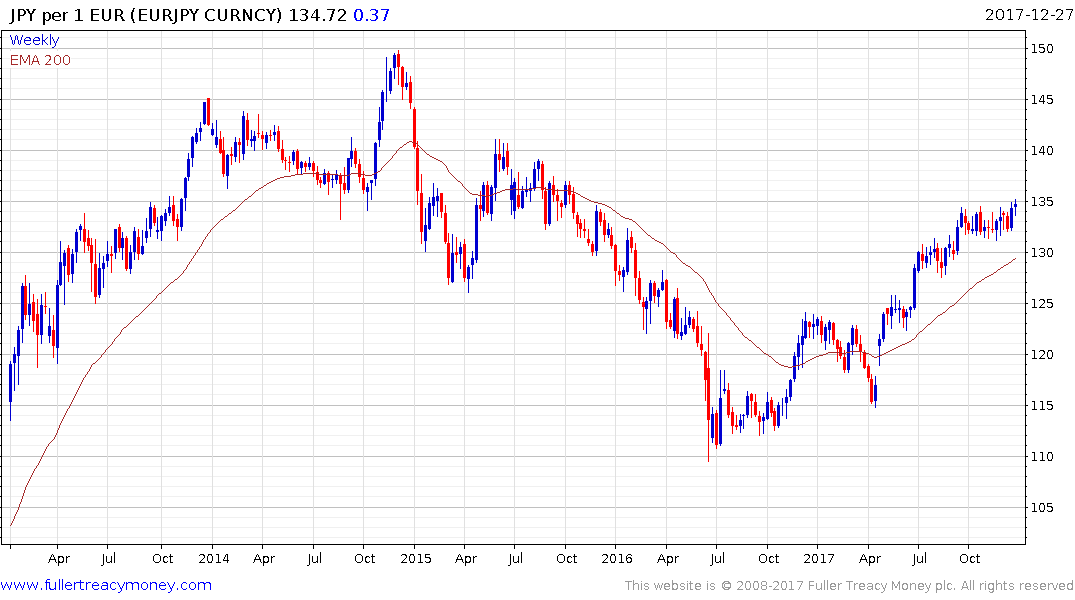Traders Bent on Bludgeoning Dollar Ignore Bond Market Signals
This article by Anooja Debnath and Sid Verma for Bloomberg may be of interest to subscribers. Here is a section:
“This year we can make a very clear case that the Fed has been raising rates and the ECB has been adding to quantitative easing and the interest rate differentials favor the U.S.,” said Alessio de Longis, a New York-based money manager at OppenheimerFunds Inc., which oversees more than $246 billion in assets under management globally. “Nonetheless the euro has appreciated. The relationship between currencies and interest rate differentials has been very weak.”
Still, investors toiling to meet return targets in an era where the pool of bonds with sub-zero yields is $8.5 trillion, according to Bloomberg Barclays Global Indexes, may eventually decide the extra 250 basis points they can get from Treasuries is enough of an enticement to buy dollar assets.
For now, fundamentals are exerting a bigger pull. After a decade being stuck in low gear trying to keep deflation at bay, the euro zone is poised for its strongest annual expansion in a decade.
“The euro has been following a re-rating of sentiment around the European continent, positive sentiment around the European political and growth environment,” de Longis said.
Markets are discounting mechanisms so it doesn’t make a great deal of sense to look at current interest rate differentials to give us a clue to how currencies might perform against one another. Instead it is better to look at the difference between 2-year yields in different jurisdictions to offer some perspective on rate expectations.
.png)
The spread between the US 2-year Treasury yield and its European counterpart is close to a 30-year peak of 250 basis points. While somewhat overbought in the short-term this spread suggests that if history is any guide the ECB should be raising rates faster than the USA sometime towards the end of 2019. Of course, quantitative easing is the wildcard in that assumption and the ECB is only due to begin seriously tapering its program from early 2018. Nevertheless, if we were to take a two-year view it is not beyond the bounds of possibility that the EU will have to play catch up on the rate front. A sustained move below 200 basis points would be required to break the almost decade long uptrend on the spread.

The Euro continues to range below $1.20 and above the trend mean. A sustained move below $1.15 would be required to question medium-term scope for additional upside.

The Euro moved to a new recovery high against the Yen today and upside follow through tomorrow would confirm the breakout to reassert its medium-term uptrend.


